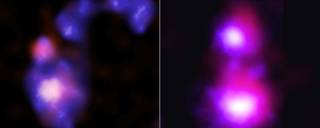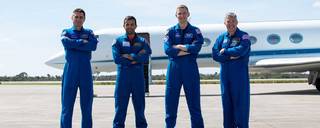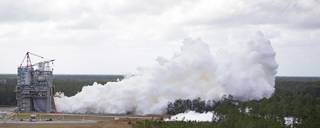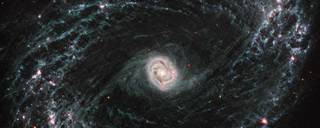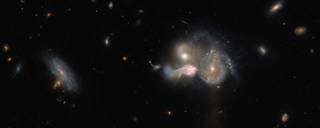Week of February 20 – February 24, 2023
Chandra Discovers Giant Black Holes on Collision Course
A new study using NASA’s Chandra X-ray Observatory has tracked two pairs of supermassive black holes in dwarf galaxies on collision courses. This is the first evidence for such an impending encounter, providing scientists with important information about the growth of black holes in the early universe.
NASA, SpaceX Announce Update to Crew-6 Mission
On Feb. 21, NASA announced that launch of the agency’s SpaceX Crew-6 mission to the International Space Station has been moved to Monday, Feb. 27, at 12:45 a.m. CST. The launch will carry two NASA astronauts – Mission Commander Stephen Bowen and Pilot Warren “Woody” Hoburg – as well as United Arab Emirates astronaut Sultan Alneyadi and Roscosmos cosmonaut Andrey Fedyaev.
NASA Continues Testing Redesigned Artemis Moon Rocket Engines
Engineers hot fire tested a redesigned RS-25 engine Feb. 22 for future flights of the Space Launch System (SLS) rocket on Artemis missions to the Moon. The test, conducted on the Fred Haise Test Stand at NASA’s Stennis Space Center near Bay St. Louis, Mississippi, is part of a certification series to support production of new RS-25 engines by lead SLS engines contractor Aerojet Rocketdyne.
Webb Reveals Intricate Networks of Gas, Dust in Nearby Galaxies
Researchers using NASA’s James Webb Space Telescope are getting their first look at star formation, gas, and dust in nearby galaxies with unprecedented resolution at infrared wavelengths. The data has enabled an initial collection of 21 research papers which provide new insight into how some of the smallest-scale processes in our universe – the beginnings of star formation – impact the evolution of the largest objects in our cosmos: galaxies.
Hubble Views Merging Galactic Trio
A spectacular trio of merging galaxies in the constellation Boötes takes center stage in an image from the NASA/ESA Hubble Space Telescope. These three galaxies are set on a collision course and will eventually merge into a single larger galaxy, distorting one another’s spiral structure through mutual gravitational interaction in the process.
For more information or to learn about other happenings at NASA’s Marshall Space Flight Center, visit NASA Marshall. For past issues of the ICYMI newsletter, click here.




























